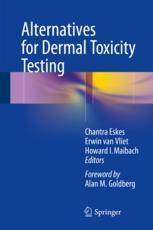

Most ebook files are in PDF format, so you can easily read them using various software such as Foxit Reader or directly on the Google Chrome browser.
Some ebook files are released by publishers in other formats such as .awz, .mobi, .epub, .fb2, etc. You may need to install specific software to read these formats on mobile/PC, such as Calibre.
Please read the tutorial at this link: https://ebookbell.com/faq
We offer FREE conversion to the popular formats you request; however, this may take some time. Therefore, right after payment, please email us, and we will try to provide the service as quickly as possible.
For some exceptional file formats or broken links (if any), please refrain from opening any disputes. Instead, email us first, and we will try to assist within a maximum of 6 hours.
EbookBell Team

4.0
6 reviewsThis book provides comprehensive information on the alternative (non-animal) dermal toxicity test methods currently available for industrial, regulatory, and academic use and also explores potential future developments. It encompasses all areas of dermal toxicity, including skin irritation, skin corrosion, skin sensitization, UV-induced effects, and skin genotoxicity. An individual chapter is devoted to each test method, with coverage of the scientific basis, validation status and regulatory acceptance, applications and limitations, available protocols, and potential role within testing strategies. In addition, perspectives from the test developer are presented, for example regarding critical steps in the protocol. The closing section addresses areas that may be of relevance for the future of dermal toxicity safety testing, including the validation and regulatory acceptance of integrated testing strategies, novel complex skin models, and high-throughput screening techniques.